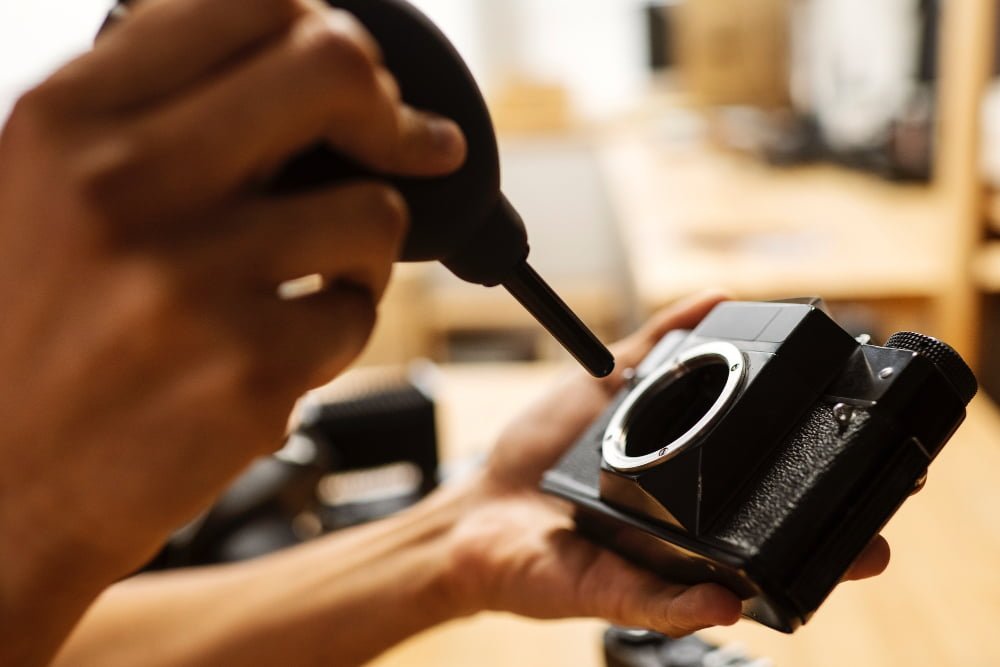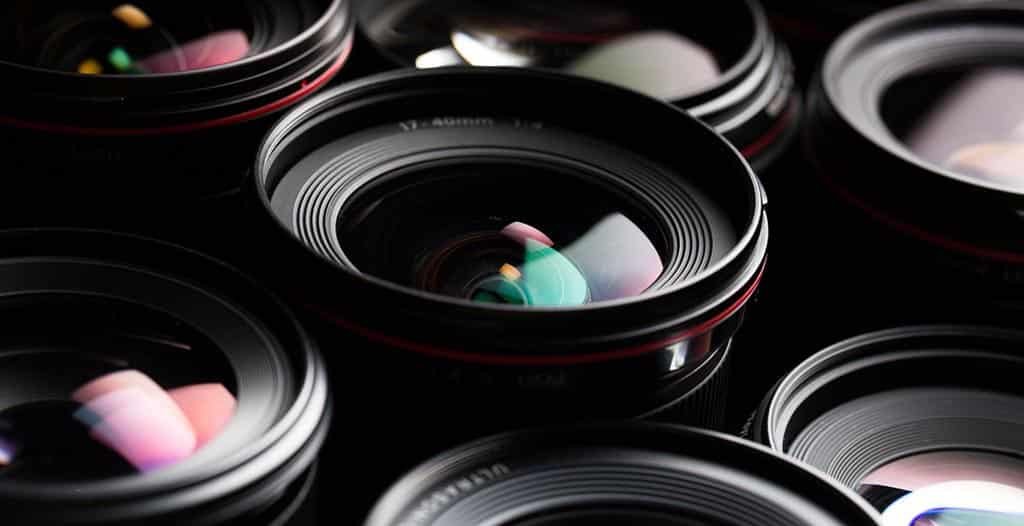Photo tripods are essential accessories for any photographer, whether amateur or professional. They offer increased stability and accuracy when shooting, making it possible to obtain sharp and quality images. In this article, we will introduce you to everything you need to know about photo tripods, from the different types to recognized brands and budgets to be expected.
Why use a photo tripod ?
If you are passionate about photography, you probably already know how useful a tripod can be. Whether you are an amateur or a professional, a photo tripod is an essential accessory to have in your arsenal. In this article, we will explore the reasons why the use of a photo tripod is so important.
1. Stability and sharpness
One of the main advantages of using a photo tripod is that it offers increased stability. When you take freehand photos, it is easy to move slightly and cause motion blur. However, by using a tripod, you can keep your camera perfectly still, which guarantees sharp and clear images.
2. Precise composition
Another advantage of using a photo tripod is that it allows you to compose your images with precision. By attaching your camera to a tripod, you have more time to think about the composition of your photo. You can adjust the angles, lines and elements of your image to get the desired result.
3. Long exposures
If you like landscape photography or night photography, a tripod is absolutely essential. When you take photos with long exposures, it is impossible to keep your camera stable freehand. A tripod allows you to capture sharp and detailed images, even in low light conditions.
4. Self-portraits and group photography
When you want to take self-portraits or group photos, a tripod is an essential tool. It allows you to position your camera at the desired distance and angle, then trigger remotely. This saves you from having to ask someone else to take the picture for you.
5. Creative experimentation
By using a photo tripod, you can also experiment more creatively. For example, you can try techniques such as light painting, long-pose photography or HDR photography. A tripod allows you to keep your camera stable while you explore these different techniques.
6. Professional videography
If you are interested in videography, a tripod is an essential tool. It allows you to keep your camera stable while you record videos. This guarantees fluid and professional images, without tremors or shaking.
The different types of photo tripod
The tripod is an essential accessory for photographers, whether amateurs or professionals. It stabilizes the camera, which is particularly useful when shooting at long exposure, in low light or with heavy lenses. But did you know that there are different types of tripods? In this article, we will explore the different options available on the market.
1. Classic tripods
Classic tripods are the most common. They are robust, durable and offer good stability. However, they can be quite heavy to carry if they are aluminum tripods, which can be a disadvantage if you plan to travel frequently with your equipment. There are carbon fiber tripods that are lighter than aluminum ones, which makes them easier to carry. They also offer excellent stability, making them a popular choice among professional photographers. However, they are generally more expensive than aluminum tripods.
2. Travel tripods
Travel tripods are designed to be compact and lightweight, making them perfect for photographers who are always on the go. They are usually made of aluminum or carbon fiber and can be folded to take up less space in your bag. However, due to their small size, they may be less stable than traditional tripods.
3. Table tripods
Table tripods are small tripods designed to be used on a flat surface, such as a table or desk. They are perfect for indoor shooting or for situations where you do not need a full-size tripod. They are generally light and easy to carry.
4. Flexible tripods
Flexible tripods, also known as octopus tripods, are tripods with flexible legs that can be twisted and folded in different positions. This allows you to attach them to objects such as tree branches, poles or rocks, which gives you greater flexibility when shooting outdoors.
5. Motorized tripods
Motorized tripods are tripods equipped with a motor that allows you to rotate your camera remotely. This can be very useful for panoramic shots or timelapses. These tripods are generally more expensive and more complex to use, but they offer advanced features for experienced photographers.
In conclusion, there are many types of photo tripods available on the market, each with its own advantages and disadvantages. Whether you are looking for a light tripod for your travel or a motorized tripod for advanced shooting, it is important to choose the one that best suits your needs and your style of photography.
The different materials of photo tripods
Photo tripods are usually made from three types of materials: aluminum, carbon fiber and magnesium. Aluminum is the most commonly used material because of its value for money. Carbon fiber is lighter and more resistant, but also more expensive. Magnesium is used for high-end tripods, offering both lightness and strength.
1. Aluminium
Aluminum is the most commonly used material for photo tripods. It has several advantages, including its lightness, durability and affordable cost. Aluminum tripods are easy to carry and suitable for outdoor use. However, they may be less stable than tripods made of heavier materials, which can be a problem in windy conditions or when using long focal lengths.
2. Carbon fiber
Carbon fiber is a high-end material used in the manufacture of professional photo tripods. It offers excellent stability, exceptional resistance and remarkable lightness. Carbon fiber tripods are ideal for photographers who need maximum stability while minimizing the weight of their equipment. However, they are generally more expensive than aluminum tripods.
3. Magnesium
Magnesium is a light and strong material, often used in the manufacture of high-end tripods. It offers excellent corrosion resistance and great durability. Magnesium tripods are generally lighter than aluminum tripods, but heavier than carbon fiber tripods. They offer greater stability than aluminum tripods, which makes them suitable for situations where stability is paramount.
4. Steel
Steel is a solid and durable material used in some photo tripods. Steel tripods are very stable and can withstand heavier loads than aluminum or magnesium tripods. However, they are also heavier and less convenient to carry. Steel tripods are particularly suitable for photographers who use heavy equipment or who work in extreme conditions.
5. Titanium
Titanium is an extremely light and resistant material, used in some high-end tripods. Titanium tripods offer excellent stability and durability while being incredibly light. However, they are also the most expensive on the market. Titanium tripods are suitable for professional photographers looking for the best compromise between lightness and stability.
The different heads for photo tripods
The camera tripod heads make it possible to attach the camera to the tripod and adjust it as needed. There are several types of heads:
1. The head ball
The ball ball is one of the most popular and versatile tripod heads. It consists of a ball that allows you to easily adjust the orientation of the camera in all directions. Thanks to its locking system, you can fix the camera in the desired position. The ball ball is ideal for photographers who need flexibility and speed in their shots.
2. The panoramic patella
The panoramic ball joint is specially designed for panoramic photographs. It offers 360-degree horizontal rotation, which makes it possible to capture panoramic images without any unwanted movement. The panoramic ball joint is often used by landscape and architecture photographers.
3. The 3D ball joint
The 3D ball joint is a tripod head that offers great freedom of movement. It allows you to adjust the orientation of the camera on three different axes: panning, tilting and rotation. Thanks to its multiple settings, the 3D ball joint is ideal for photographers who need precise control of the composition of their images.
4. The gimbal ball
The gimbal ball is a tripod head that offers great stability and freedom of movement in all directions. It is often used for shooting in portrait mode, because it makes it easy to switch the camera from the horizontal to the vertical position. The gimbal ball is also appreciated by animal and sports photographers, because it makes it easy to track fast movements.
5. The fluid patella
The fluid ball head is a tripod head used mainly for video. It offers fluid and regular movements, which makes it possible to make professional-quality videos. The fluid ball joint is equipped with an adjustable friction system, which makes it possible to control the fluidity of the camera’s movements.
Each type of head offers different features and is suitable for specific types of shots. It is important to choose a head adapted to your needs and your style of photography.
Photo monopods: what are they for and when to use them?
Photo monopods are alternatives to tripods, offering partial stability when shooting. They are lighter and easier to carry, making them ideal for situations where using a tripod is impossible or impractical. Monopods are often used for moving shots, such as sporting events or reporting.
What budget for a tripod alone? What is the budget for a tripod + head kit?
The budget for the purchase of a photo tripod varies according to several factors, such as brand, manufacturing quality, features and materials used. In general, a tripod alone can cost between 50 and 500 euros, or even more for high-end models. For a tripod kit with a head, it is necessary to provide an additional budget, ranging from 100 to 1000 euros, according to the same criteria.
The different brands of tripods
There are many renowned brands in the field of photo tripods, such as Manfrotto, Gitzo, Vanguard, Benro, and many others. Each brand offers a range of tripods adapted to different needs and budgets. It is important to do research and read reviews before making a choice, in order to find the tripod that best meets your expectations.
Example of recognized models with rates
Here are some examples of recognized models of photo tripods, with their indicative prices:
- Manfrotto MT190XPRO4: from 200 euros
- Gitzo GT1545T: from 600 euros
- Vanguard Alta Pro 263AB 100: from 150 euros
- Benro Mach3 TMA37AL: from 300 euros
Maintain your photo tripod
The photo tripod is an essential accessory for any photographer. It stabilizes the camera and obtains sharp and accurate images. However, like all equipment, it requires regular maintenance to ensure its durability and proper functioning. Here are some tips to maintain your photo tripod:
1. Clean regularly
After each use, take the time to clean your photo tripod. Use a soft, non-abrasive cloth to remove accumulated dust and dirt. Don’t forget to check the tripod feet, clamps and joints to remove any trace of dirt.
2. Check the tightenings
Before each use, check the tightening of your photo tripod. Make sure that the fixing screws are tight to avoid unwanted movements. If you notice a play or loosening, tighten them carefully.
3. Protect it from shocks
Carry your photo tripod in a protective cover or bag to avoid shocks and scratches. When using it outdoors, choose a stable and secure location to avoid falls and damage.
4. Grease the joints
If you notice squeaking or difficulty adjusting the joints of your photo tripod, it is recommended to grease them slightly. Use a special grease for cameras and apply it carefully to facilitate movements.
5. Store it properly
After each use, store your photo tripod in a dry and clean place. Avoid leaving it exposed to moisture, excessive heat or dust. This will help preserve its quality and durability.
By following these maintenance tips, you will be able to extend the life of your photo tripod and continue to capture beautiful shots in complete stability.
Conclusion
In conclusion, a photo tripod is an essential accessory for any photographer wishing to obtain sharp and quality images. There are different types of tripods, adapted to different needs and situations. The choice of a tripod will depend on your budget, your preferences and your style of photography. Take the time to research and compare the different options before making a purchase. A good tripod will accompany you in your photographic adventures for many years.


